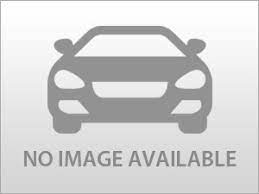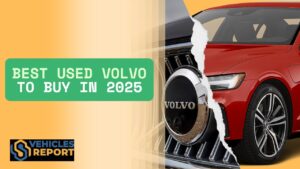Some Facts About Odometer Rollback
A study by NHTSA reports a staggering 452,000 used cars with false odometer readings are sold yearly, this is 3.47% of all used vehicles sold. What does this mean? If you plan to buy a used car, one of every 29 cars you check has a rollback odometer. The loss of an estimated $1.05 billion every year in the United States is enough proof of the effect of odometer rollback fraud.
Do you know that it doesn’t matter if it is an individual or a dealership selling a car to you, they are mandated by law to let you know in a written document about the actual mileage and any fixes or repairs that have previously occurred on the odometer. So any act of odometer rollback is a crime that is punishable under the law. You can use a used car seller for selling or trying to sell a car whose odometer has been rolled back to you.
How to Do Perform Odometer Rollback Check– Watch Out for These Signs
Nowadays, cars are built with either mechanical or digital odometers. For a mechanical odometer roll-back, culprits would only have to open it up. For a digital odometer rollback, a cheap tool will be needed to alter the numbers on the digital odometer. These types of odometers were not only developed to change the aesthetics but to also prevent odometer roll-backs – sadly a solution that is now defeated.
The good news is that there are ways to detect fake odometer reading even before getting a history report. Please consider the following parts:
1. Check the Brake Pedal Pad
The brake pedal of a car is one of the most used components when driving, and as a result, it wears down as the mileage increases. For instance, a car with a 100,000 odometer reading is expected to have a brake pedal that is just a little worn down than a car with a 250,000 odometer reading. Check for any discrepancies! Does the car have a low mileage and yet with a heavily worn-down brake pedal? Does the brake pad look too new compared to other parts of the car? These are red flags that are worth questioning.
2. Inspect the Steering Wheel and the Driver’s Seat
As a professional, the first thing to check in a used car after opening the door is the state of the steering wheel and the driver’s seat. The type of materials used for the steering wheels and seats differ from manufacturer to manufacturer.
Usually, very cheap cars are more prone to wear and tear, while expensive cars command very plushy and rugged materials. However, the steering and seat areas are good indicators of any signs of odometer roll-back since the driver always has direct contact with these areas.
In case you notice the leather or fabrics are already worn to shreds, the car may have likely crossed the 200,000 km mark.
3. Examine the Door Hinges
Since the driver-side vehicle door gets opened every time the car is in use, the door hinges go through a lot of stress. A car is usually supported by two hinges that weigh around 40 kg or more. The frequent opening and closing of the door can badly impact these hinges.
Open the driver’s side door and try to pull it up and down by grabbing it by the end and checking for any unusual sounds and loosening. If it’s loose, that means the car has really been through a lot, and a low mileage may indicate a possible odometer rollback fraud. Unlike the steering wheels and seat coverings, a car’s door hinges are not usually replaced and remain a great rollback indicator.
4. Check Analog Odometers for Any Visible Signs
For an analog odometer rollback, the dashboard will need to be disassembled and this will take only an expert to do without leaving suspicious marks behind. Apart from this, inspecting for any missing screws, slightly broken areas, and misaligned numbers may offer clear signs of a rollback odometer.
5. Check the Maintenance Records
A vehicle needs regular servicing for best performance and each time there is any fix or change like changing the oil, the service history should be updated with the fix done and the current mileage. If the maintenance records are provided, look for any signs of irregular odometer readings.
If the seller/owner is unable to provide any maintenance record, this can also be a red flag, but it’s not usually the case as some owners don’t have consistent maintenance records of their cars.
Usually, a car accumulates 20,000 kilometers a year. This means that a vehicle older than ten years, and used regularly should have accumulated more than 200,000 kilometers. This can be something to consider when looking to inspect a used car for any signs of a rollback.
Run a VIN check to know how long a vehicle has been in use, including the number of previous owners.
Run a VIN Check
Performing a VIN Check will generate the Vehicle History Report – a great tool that reveals useful information about a car’s past. These include the accident history, mileage history, service history, and many more.
A vehicle history or VIN report provides information about major changes, repairs, and occurrences a car has undergone, including the odometer readings at these times.
Getting a vehicle history report is relatively easy – all you need is the VIN of the car, a unique 17-digit number assigned to every car by the manufacturer. It can be found in the car documents and also physically on the vehicle itself.
This VIN can be entered into an online VIN check tool to generate the vehicle history report.
The vehicle history report is a more reliable tool than the car title which can still be altered physically. The information and records provided in VehiclesReport Vehicle History Report are up-to-date and retrieved from reliable, trusted, and secure databases, making it one of the most reliable ways to check a used car for odometer rollback.
How is Digital Odometer Rollback Done?
Odometer rollback of a car with analogue odometer only requires that the instrument is taken off the dashboard, disassembled and the digit gears are rolled back. This is easily detected, as there can be many visual tampering signs.
On the other hand, the process involved in a digital odometer rollback is quite different. This usually involves connecting to the car via a diagnostic port in order to get access to the odometer software, and altering the software and its stored data. As a matter of fact, the digital tools needed to do a digital odometer rollback are easy to find. It’s noteworthy to say that some licensed repair shops use these professional tools for legitimate reasons.
The Risk of Being an Odometer Rollback Victim
The aim of an odo-meter rollback is to defraud used car buyers. If a 100,000 km car can be twice as expensive as one with 300,000 kilometers, then it should not be surprising why many dishonest sellers are involved in odometer rollback fraud.
Nowadays, car manufacturers don’t manufacture durable cars and this explains why new cars become money drainers after a few years of use. Car manufacturers profit mostly from spare parts rather than car sales.
Don’t be in a hurry to buy a car with a low mileage, it’s worth verifying the car for any signs of odometer rollback – getting the vehicle history report and physically inspecting the car.
Naturally, one or more car parts wear out as mileage increases. When the car reaches about 200,000km, several parts like the air filter, brake pads, tires, shock absorbers, water pump, etc would have been due for replacement. This is why a used car seller will be so keen to keep the mileage as much below 200,000 km as possible by performing a rollback odometer. Be aware that the numbers above don’t apply to every car on the road. Besides, car owners maintain their cars differently.
You should avoid being an odometer rollback victim by verifying the actual mileage of a used car you’re looking to buy – it’s better to pay a token to run a VIN check than be fooled into paying heavily for a used car with hidden issues.
Frequently Asked Questions
What is Odometer Rollback?
An odometer roll-back is when a vehicle’s odometer is altered and falsely presented as the actual mileage to the buyer. This is a major concern these days as several thousands of used cars are involved each year.
I detected an odometer rollback on a car I wanted to buy, so what’s next?
Make a U-turn on the purchase of a car with fake mileage because you’ll have to pay more than usual for it. Since odometer rollback fraud is a serious crime, you should be careful to involve the police but do not disclose this to the seller for your safety and protection.
Is the law in support of odometer rollback?
No. Most countries, including the US, do not take rollback odometer lightly as it’s a serious offense in the automotive industry. Please refer to the applicable legislation in your jurisdiction for accurate information.
How do I check the actual mileage on a used car?
The best way to avoid being a victim of odometer fraud is to get the vehicle history report before buying the car. Also, take a mechanic along for a physical inspection of the car and look out for any visibly wear out areas.
Is a digital odometer rollback possible?
Yes. Both analogue and digital odometers can be altered. There are many cheap tools in the market for performing a digital odometer roll-back. With the right tools, a digital odometer rollback only takes a few minutes.
How to undo an odometer rollback?
Automotive specialists are able to fix any odometer-related issues. Fixing a digital odometer rollback is easier than analogue odometer rollback which can be very difficult because the right tools are easily accessible for use by the common mechanics.








